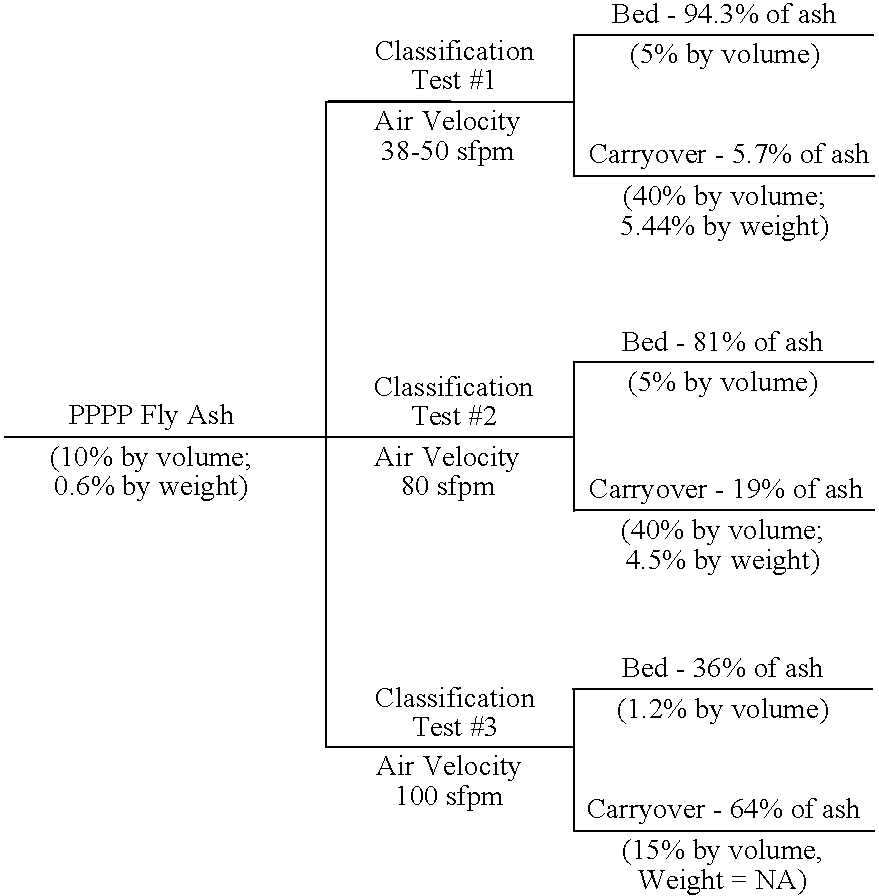Separation Of Cenospheres From Fly Ash
- Summary
- Abstract
- Description
- Claims
- Application Information
AI Technical Summary
Benefits of technology
Problems solved by technology
Method used
Image
Examples
examples
I. Overview
[0040]The investigative work was directed to demonstrate the feasibility of removing cenospheres from as collected fly ash using a dry process. Dry processes are advantageous because it is not always possible to use conventional water flotation processes. Some fly ash particles, especially ASTM C 618 Class C fly ash with high lime content, have self-cementitious properties, and they will tend to agglomerate, making their separation by size and density difficult.
[0041]Work was done on trying to separate cenospheres by size and by density using a one step dry air classification process on as collected fly ash. While these attempts showed some promise, small solid and large hollow particles were collected at the same location due to an overlap in their densities and terminal velocities. Laboratory scale jet sieve work was successful in size classification followed by floatation in water; however floatation in water cannot be used on a large scale with ASTM C 618 Class C fly ...
PUM
| Property | Measurement | Unit |
|---|---|---|
| Fraction | aaaaa | aaaaa |
| Fraction | aaaaa | aaaaa |
| Density | aaaaa | aaaaa |
Abstract
Description
Claims
Application Information
 Login to View More
Login to View More - R&D
- Intellectual Property
- Life Sciences
- Materials
- Tech Scout
- Unparalleled Data Quality
- Higher Quality Content
- 60% Fewer Hallucinations
Browse by: Latest US Patents, China's latest patents, Technical Efficacy Thesaurus, Application Domain, Technology Topic, Popular Technical Reports.
© 2025 PatSnap. All rights reserved.Legal|Privacy policy|Modern Slavery Act Transparency Statement|Sitemap|About US| Contact US: help@patsnap.com



